Great white sharks (Carcharodon carcharias) are found all over the world. Many immediately think of South Africa and/or Australia when considering hotspots for great white sharks. The populations of great whites off the coasts of these nations are impressive, to be sure. But scientists have discovered another hub of great white shark activity. It may not be as well-known for great white sharks as other parts of the world, but South Carolina attracts high numbers of these apex predators every year.
What is bringing these sharks to South Carolina in such high numbers? And why are some massive great whites returning to South Carolina waters again and again? Scientists are working to answer these questions.
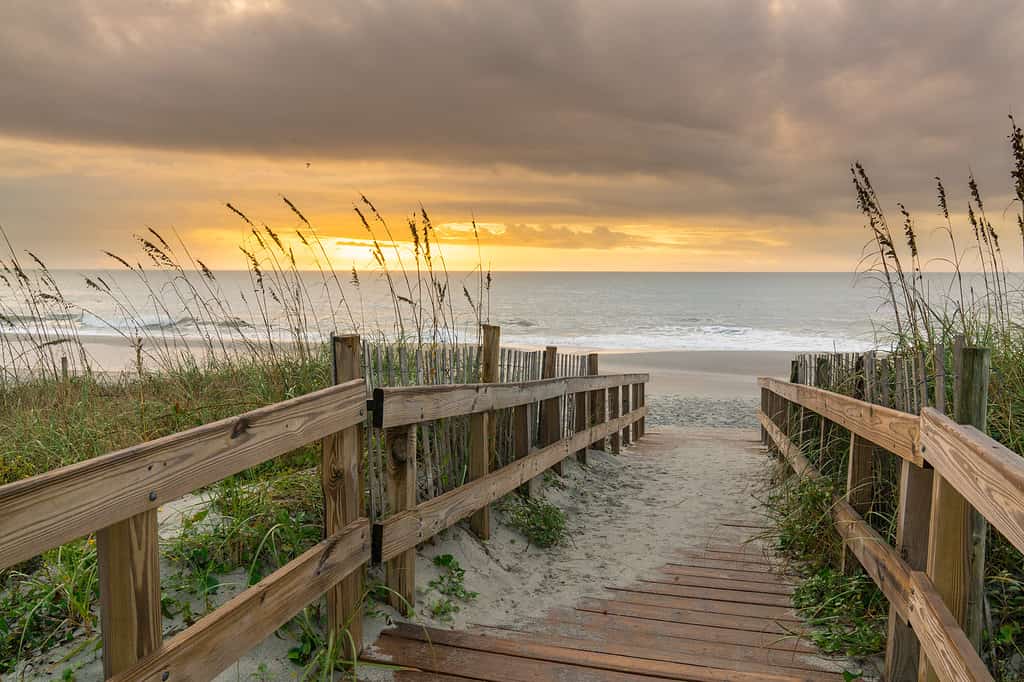
A surprising number of large great white sharks are showing up off Myrtle Beach, along with the rest of the South Carolina coast.
©iStock.com/pabradyphoto
OCEARCH
OCEARCH is a global nonprofit organization that is focused on learning as much as possible about great white sharks and educating the public about them. An ocean with too few sharks is an ocean that is out of balance. As the apex predators of the world’s oceans, great white sharks regulate the rest of the food chain. As OCEARCH puts it, they are the “balance keepers” of the oceans.
Researchers from OCEARCH tag and track great white sharks, many of which are found off the Atlantic coast of Canada and the United States. A transmitter is affixed to the shark’s dorsal fin at its tagging. It is a quick and virtually painless procedure for the shark. The tag doesn’t affect the shark’s natural abilities in any way once it reenters the water.
When a shark surfaces, the transmitter sends a “ping” to OCEARCH. These pings provide geolocation data, helping researchers monitor the movements and behaviors of these sharks.
It may come as a surprise just how many of these pings are located in South Carolina waters. The number of massive great white sharks that frequent South Carolina may be an even bigger surprise. Let’s meet the largest great whites who seem to have a real affinity for the Palmetto State.
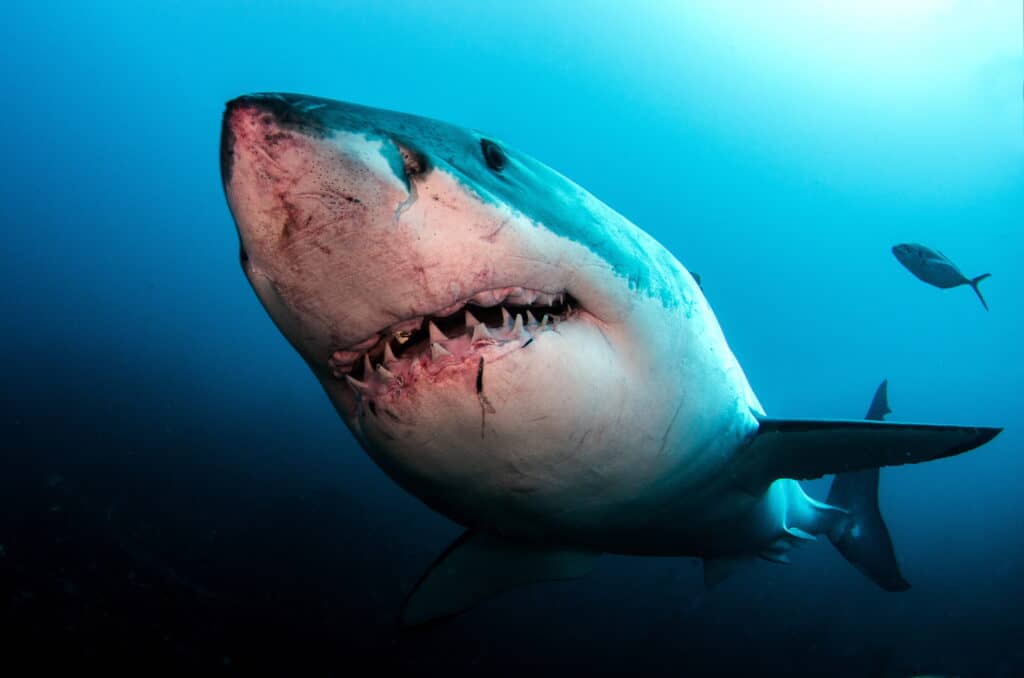
The Great White Shark is the apex predator and “balance keeper” of the world’s oceans.
©Tomas Kotouc/Shutterstock.com

Miss Costa
Miss Costa is over 12 feet long and weighs in excess of 1,000 pounds. She was tagged on September 23, 2016, in Nantucket, Massachusetts. OCEARCH named her after their partner, Costa Sunglasses.
This female shark has been tracked longer than many other sharks currently in OCEARCH’s system. With the amount of data gathered from Miss Costa over several years, OCEARCH has been able to denote some very clear patterns. One such pattern is that Miss Costa consistently returns to South Carolina.
This female great white has been tracked from Massachusetts to the Florida Panhandle, but most of her tracking pings are off the coasts of Virginia, North Carolina, and South Carolina.

Great whites are showing up in big numbers off Hilton Head Island and the remainder of the Palmetto State’s coast.
©iStock.com/William Reagan
Ironbound
Ironbound is a male great white shark measuring over 12 feet long and weighing around 1,200 pounds. The shark was tagged on October 3, 2019, in Lunenburg, Nova Scotia. OCEARCH researchers named the shark after West Ironbound Island near Lunenburg.
Ironbound can be found in Canadian waters during the summer months, but he seems to show up in the Carolinas in the spring, as do many other great whites currently tracked by OCARCH.

Large great white sharks keep showing up in South Carolina, often in the spring.
©Sergey Uryadnikov/Shutterstock.com
Breton
Breton was also tagged in Nova Scotia. He was named in honor of the residents of Cape Breton, where he was tagged.
This male great white shark is over 13 feet long and weighs close to 1,500 pounds. Breton seems more apt to travel the deep open ocean than many of the other sharks tracked by OCEARCH. However, he seems to consistently return to South Carolina in the spring, just like many other great whites currently under OCEARCH surveillance.

The South Carolina coast has a wide variety of wildlife, including great white sharks.
©iStock.com/Tricia Jeter
Scot
Scot is an adult male great white shark that was tagged on September 8, 2021, off of Ironbound Island, Nova Scotia. He was the first great white shark tagged during OCEARCH’s Expedition Nova Scotia 2021 and was named in honor of the people of Nova Scotia.
Scot measures over 12 feet long and tips the scales at a whopping 1,644 pounds. The shark has patrolled the waters of Nova Scotia to the north and has ventured past the Florida Keys in the south, but the highest concentration of Scot’s tracking pings since the fall of 2021 has been in South Carolina. This behemoth great white shark always seems to return to these waters.
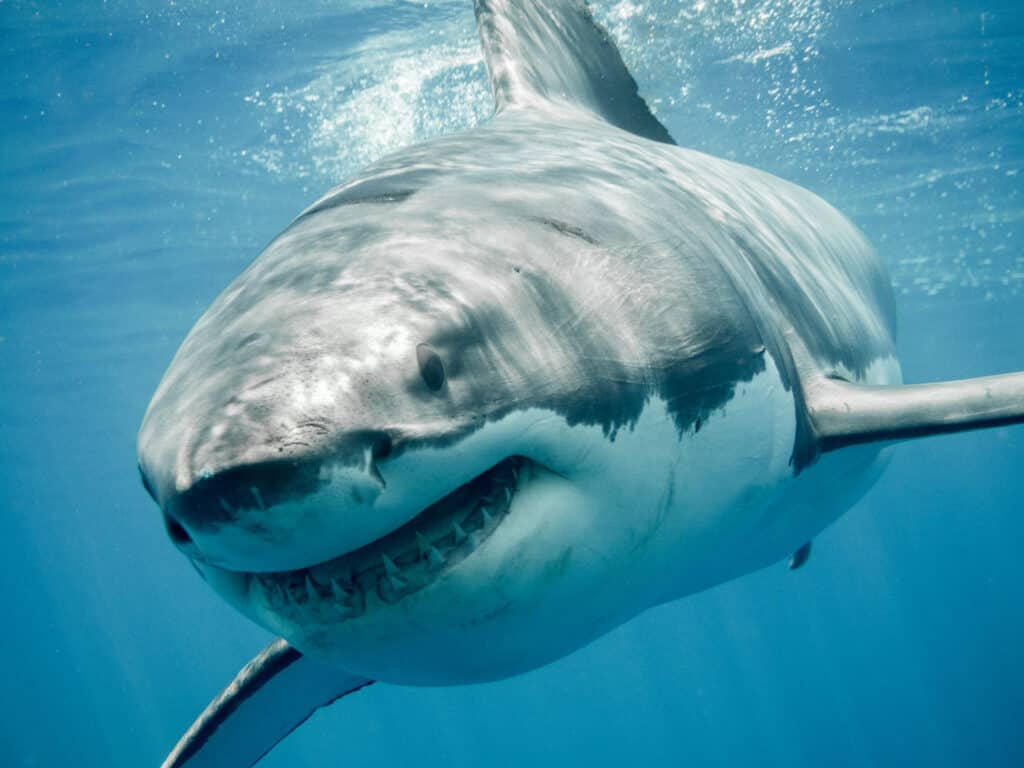
OCEARCH tracks great white sharks up and down the Atlantic coast.
©Ramon Carretero/Shutterstock.com
Why South Carolina?
The great white sharks tracked by OCEARCH cover a lot of water. These sharks have been tracked from the waters of Quebec to Cuba, as well as into the Gulf of Mexico approaching the border of Alabama and the Florida Panhandle.
What causes these sharks to swim such great distances? Multiple factors motivate shark movements, such as water temperature, prevailing currents, prey availability, and reproduction. That last one may be the key reason these sharks show up in South Carolina each year. There is a growing suspicion that the coastal waters of the Carolinas may be a great white shark nursery.
This would answer a lot of current questions. If the coastal water of North and South Carolina truly is a breeding ground for great whites, it would explain why the sharks consistently return around the same time each year. It would also explain why some juvenile great whites are found in the area for a prolonged period, while adult sharks tend to move in and out.
OCEARCH has learned much about the life cycle of the great white shark, but where, when, and how these sharks breed remains a mystery. OCEARCH refers to great white shark mating as “the last piece of the puzzle” in our understanding of these giant ocean predators.

Young great white sharks are found in high numbers in South Carolina, adding to the evidence that it may be a nursery.
©iStock.com/Alessandro De Maddalena
How Many More?
As OCEARCH continues its research, including the tagging and tracking of additional sharks, more answers will be revealed. While we wait to learn more, one thing has already been made clear. South Carolina waters are teeming with great white sharks.
But just how many sharks are stalking South Carolina waters, and how big are they? We don’t know. Not yet, anyway. We do know that the tagged sharks currently tracked by OCEARCH represent only a small fraction of the great white sharks in the area.
Are there larger great whites than Breton and Scot in these waters? It is certainly possible. It may even be probable if this area is proven to be the home of a great white shark nursery.
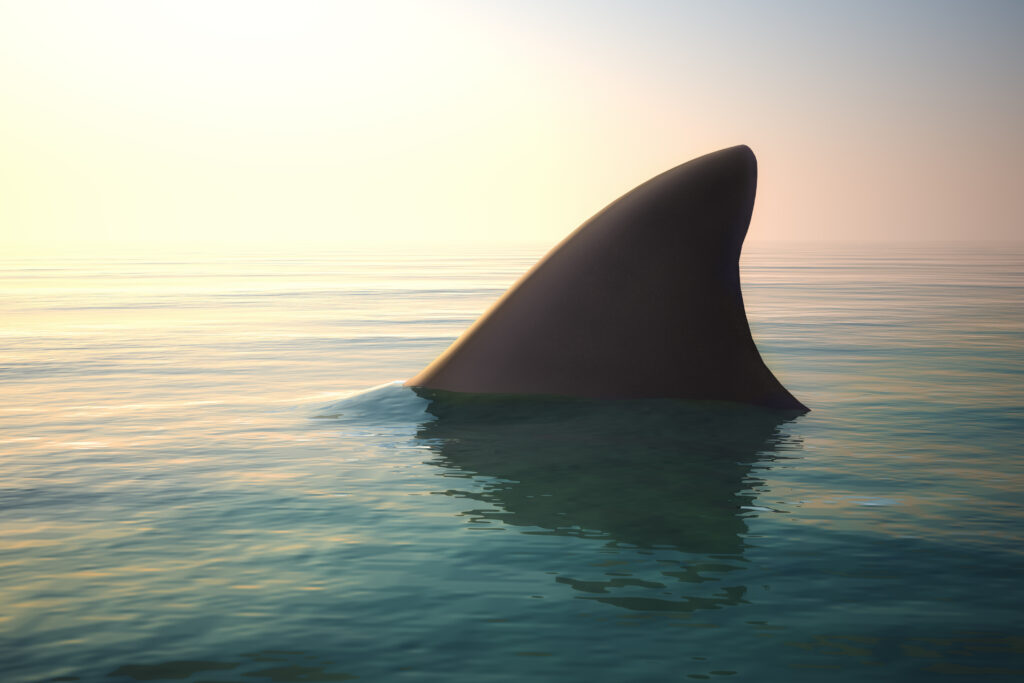
There are undoubtedly many more great white sharks in South Carolina’s waters.
©iStock.com/DigtialStorm
Shark Attacks
South Carolina ranks fourth among U.S. states in terms of shark attacks, trailing Florida, Hawaii, and California. North Carolina ranks right behind South Carolina to round out the top five.
There are more shark attacks in Florida each year than in the next five states combined. In fact, Florida has more shark attacks than anywhere else in the world. However, many of these attacks are not from great white sharks, but rather from other shark species.
South Carolina’s prolific number of large great white sharks has not translated into a rise in shark attacks, so it would seem there is no need to be alarmed. Although when the apex predator of the world’s oceans is swimming nearby, South Carolina beachgoers and residents would do well to remain aware.
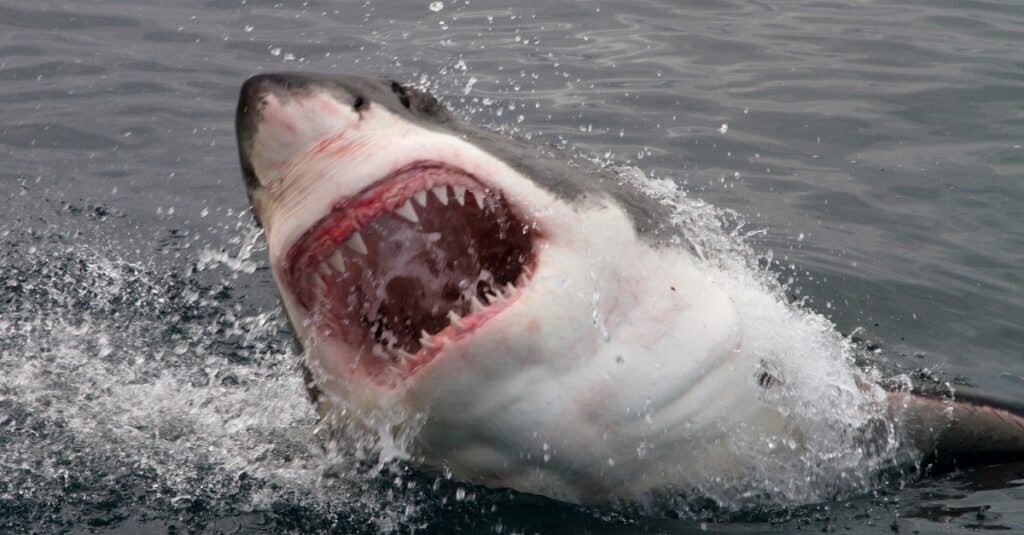
While the odds of a great white attack are low, that doesn’t mean they are zero.
©iStock.com/Peter_Nile
Where Is South Carolina Located on a Map?
South Carolina is a state located in the southeastern region of the United States, known for its subtropical beaches, sea islands, historic Charleston with its pastel-colored houses, old plantations, and Fort Sumter, and the Grand Strand that boasts a 60-mile stretch of beachfront, golf courses, and the vacation town Myrtle Beach.
Here is South Carolina on a map:
The photo featured at the top of this post is © Jsegalexplore/Shutterstock.com
Thank you for reading! Have some feedback for us? Contact the AZ Animals editorial team.






